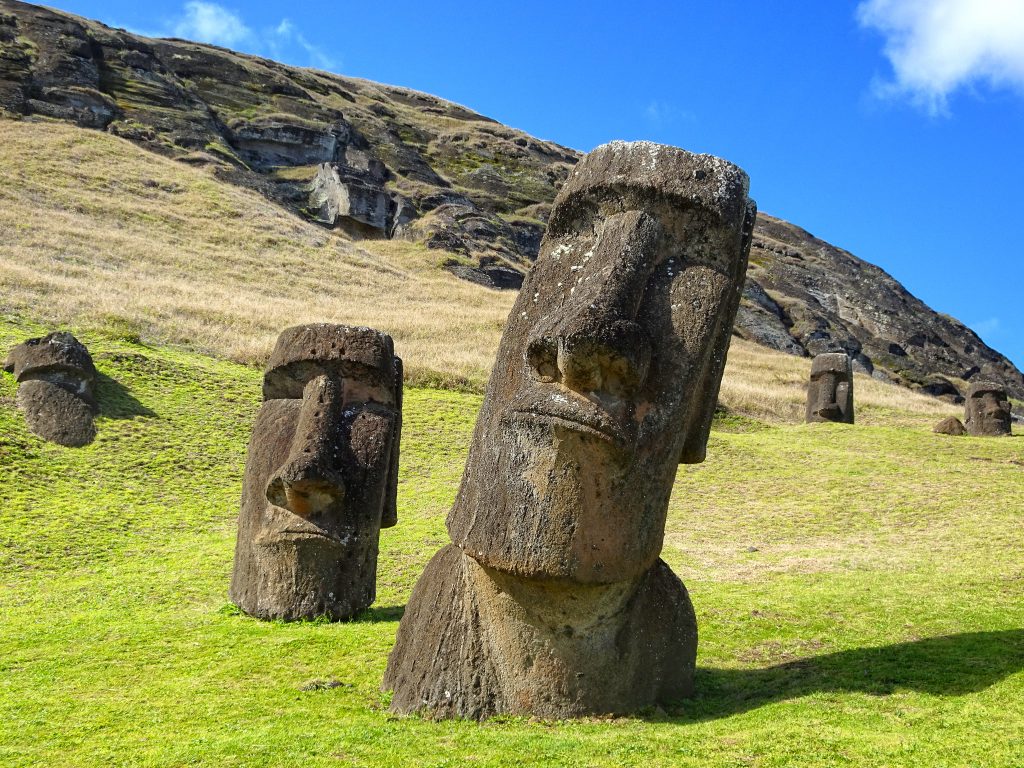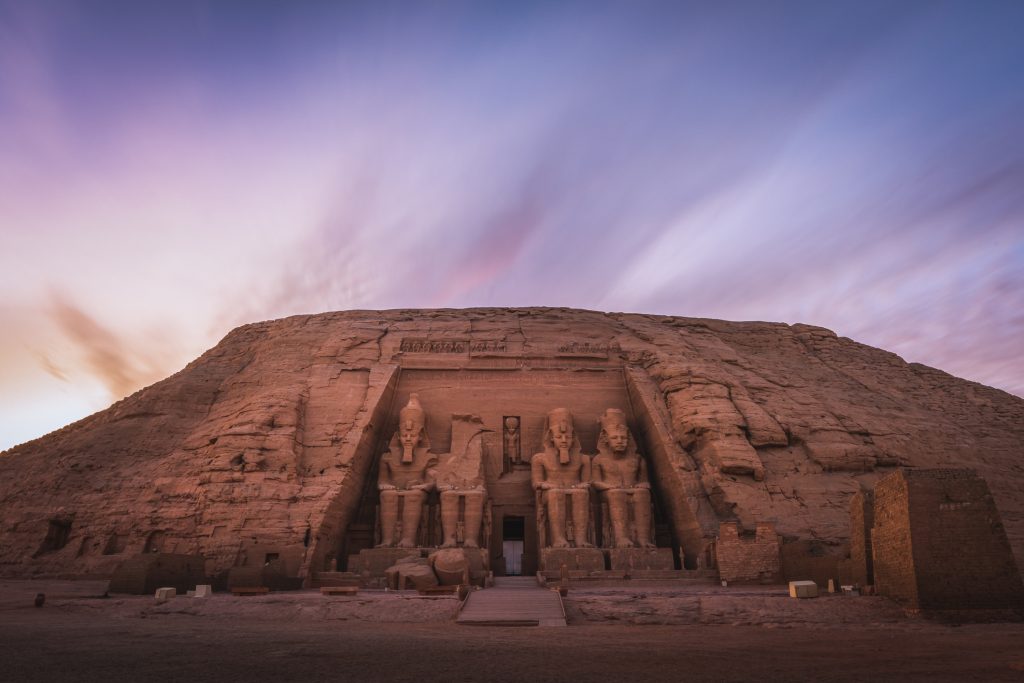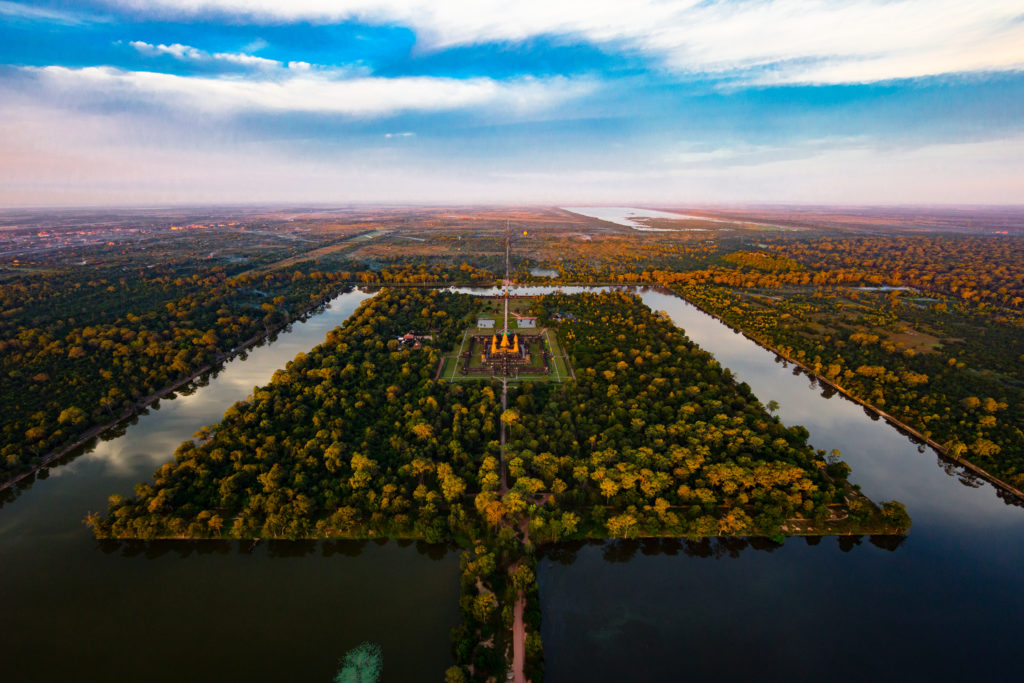The Great Sphinx of the Giza Plateau in Egypt is one of the world’s most celebrated and mysterious monuments. For millennia this giant statue has guarded untold secrets. Egyptologists and Archaeologists have dated and attributed the Sphinx to the Pharoah Khafre of the 4th Egyptian Dynasty. But other pieces of evidence suggest an intriguing and ancient riddle of the Sphinx. So, who really built the Sphinx, and why? Let’s explore the ancient riddle of the Sphinx.
Located six miles west of Cairo, close to the Nile River, the Sphinx can be found just southeast of the Great Pyramid of Giza. A breath-taking and wonder of human construction towering over visitors at a height of approximately 66 feet and a length of 240 feet, the Sphinx is one of the largest monoliths in the whole world.
The Sphinx is a centre point for the pyramids around it and faces east towards the rising sun, forming part of one of the most famous archaeological sites of all time. The feline statue is thought to depict a lion, a solar symbol of strength and power.
There are many Sphinxes, but none are as large or iconic as the one carved out of the Giza plateau’s limestone bedrock. The full structure of this statue was only fully revealed in the 1930s. Since then, decades of work by Egyptologists, Historians, and Geologists have gone into uncovering the Sphinx’s origin. The official age is recorded at roughly 2494 BC. However, a consensus has never been reached.
A group of scientists believe that the Sphinx dates back to a much earlier, unknown culture. If the Sphinx is significantly older, it challenges much of what we think we know about human history. Was there an advanced culture that existed before modern human civilisation as we know it began?
The Riddle of the Sphinx could reveal a critical piece of the human origin story.
How was the Sphinx Discovered?
For millennia, the Sphinx appeared as a giant head popping up through the desert sands. The first record of the Sphinx in modern history is uncertain, but it’s likely that the Romans and Greeks were influenced by the ancient Egyptian’s Sphinx as it featured in those latter culture’s mythologies.
In 1817, one Captain Caviglia and 160 of his men attempted to liberate the Sphinx, but they couldn’t dig it out fast enough before more sand would spill back into place. Finally, in the late 1930’s, it was Egyptian Archaeologist Selim Hassan and his team who dug the Sphinx out of the sands of the Giza plateau.
What is the Riddle of Sphinx?
The Sphinx is a being that appears throughout history as a guardian of secret knowledge. In the ancient Greek myth of Oedipus, the Sphinx was a creature with the head of a human, the body of a lion and the wings of a bird. It guarded the entrance to the city of Thebes. Anyone wanting to enter the city had to first answer the Riddle of the Sphinx. If they got it wrong, the Sphinx would strangle and eat them.
The exact origin of the name Sphinx isn’t known. Some suggest it is related to the Greek word “sphingein,” meaning “to bind” or “to squeeze.” Others suggest the name “Sphinx” was a Greek adaption of the Khemetian (ancient Egyptian) word “shesepankh,” which means “living image.” All names given to the Sphinx came much later than it was actually built.
How Old is the Sphinx? According to the Archeaology
In 1977, American Archaeologist Dr. Mark Lehner was granted access to the Sphinx to map the site with special sensing equipment. He was then able to create the first accurate scale map of the Sphinx. Since then, Lehner has spent most of his career studying the colossal statue. But what about the statue’s age and the reason it was built?
Lehner, along with most Egyptologists, believes the Sphinx was commissioned by the Pharoah Khafre, and that the head of the Sphinx was shaped in his likeness. Khafre was the son of Khufu, who is thought to have initiated the building of the Great Pyramid of Giza. Khafre reigned over Egypt’s 4th Dynasty, probably between 2,520 and 2,494 BC, (the exact dates are uncertain.)
Lehner thinks it took around three years to complete with a team of 100 workers. Behind the Sphinx is a causeway leading almost directly to the Pyramid of Khafre, giving the impression that the Sphinx is guarding it, and adding weight to Lehner’s theory.
In 1910, Archaeologist Uvo Hölscher also thought that the Sphinx must have been built around the same time as Khafre’s pyramid and other monuments. The similarity between the types of limestone blocks that were used to construct the Sphinx and Khafre’s temple, (which are thought to have been taken from the same quarry,) lead Hölscher to this conclusion.

Image: A photo of the partially excavated Great Sphinx, taken sometime around 1878. Source
Why Was the Sphinx Built?
According to Lehner, the Sphinx was almost certainly a representation of royalty and divinity, associating the pharaoh with the sun and giving him a god-like status. He speculates that the Sphinx Temple, the Sphinx, and Khafre’s Pyramid formed a kind of ancient technology that harnessed solar energy for the purpose of allowing the pharaoh to achieve eternal life when his physical body died.
Could the Sphinx be older?
In 1990, a researcher called John Anthony West enlisted the help of Dr. Robert M. Schoch, a Geologist from Boston University, along with a team of Geologists and Geophysicists, to take a closer look at the Sphinx. West came across the theory that water erosion had occurred on the Sphinx.
The implications of erosion caused by water–in an area that had not seen significant rainfall since before the Sphinx was supposedly built–opened up exciting new questions. West was convinced that the Sphinx must have been older than Lehner suggested; Schoch, on the other hand, was sceptical of this idea.
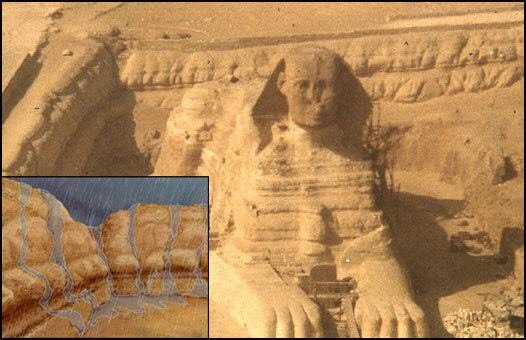
Image: The patter of erosion as found on the Sphinx’s body and surrounding enclosure. Source
What Caused the Erosion of the Sphinx?
Upon viewing the erosion on the Sphinx’s body, Schoch was immediately convinced it had to be much older than previously assumed. He described the erosion as having undulating vertical, coved (rounded like a cove) fissures.
Schoch perceived that this non-inform erosion could only have been caused by the way rainfall falls vertically, eroding the limestone in vertical strips over time. Incidentally, this erosion was found on the body and not on the head (suggesting the head has been re-carved in more recent times.)
Beyond these surface level observations, Schoch, in collaboration with a Geophysicist named Thomas Dobecki, discovered the same erosion patters below the surface of the bedrock when they conducted seismic experiments. They even found the same kind of erosion beneath newer limestone blocks on the Sphinx that had served as repairs.
Schoch said:“…my initial estimate [of the Sphinx’s original build] was on the order of several millennia prior to the onset of the current hyperarid Sahara conditions. Using the subsurface seismic data, this estimate is confirmed, I currently am of the opinion that the core body of the Great Sphinx dates back to before the end of the last ice age (that is, before ca. 9,700 BCE.)”
If the ancient Egyptians didn’t build the Sphinx around 2,500 BC, then who did? At the time, no civilized culture was thought to exist that far back.
The American Association of Petroleum Geologists agreed with Schoch’s analysis. Two Ukrainian Geologists also published a paper on the weathering of the Sphinx, concluding that the geological data suggested the Sphinx was submerged in water in the Early Pleistocene, “and its initial construction is believed to date from the time of most ancient history.”
Note that the Pleistocene is a geological time period that ended about 11,700 years ago.
Egyptology’s Response to Weathering and Dating of the Sphinx
Not everyone was in agreement with Schoch. Most Egyptologists were strongly opposed to Schoch’s theory, especially Zahi Hawass, secretary general of the Supreme Council of Antiquities. Hawass argued that the possibility of the Sphinx being that old was impossible because:
“No single artefact, no single inscription, or pottery, or anything has been found until now, in any place to predate the Egyptian civilization more than 5,000 years ago.”
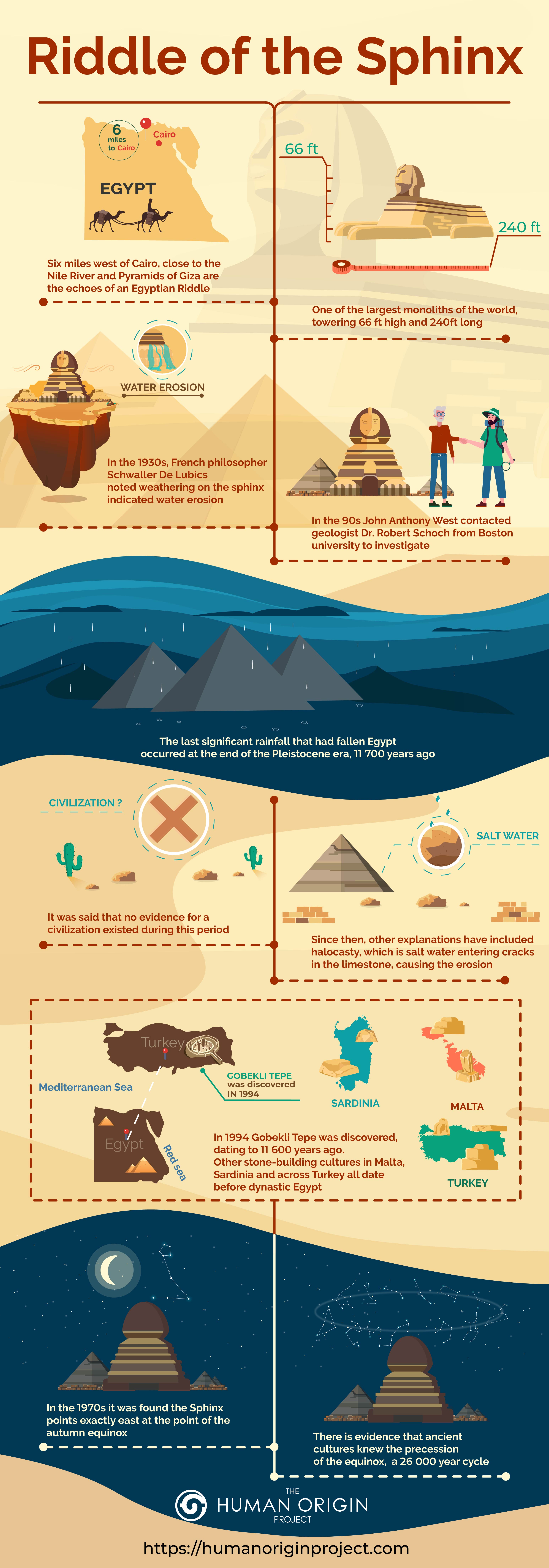
As far as we know, this is still true. If this ancient culture did exist, then we’re not aware of any other traces they left. But then again, that doesn’t mean they don’t exist; it could be we just haven’t found them yet. Tens of thousands of years is a long time; long enough to erase almost all trace of a past civilisation, apart from perhaps substantial stone monuments.
The Evidence and Arguments Against Schoch’s Theory
Other Geologists had differing opinions to Schoch’s. Rather than erosion on the Sphinx’s body caused by rainfall, Dr. James A. Harrell suggested that a type of weathering called haloclasty could be a significant factor in the erosion.
Haloclasty happened when saline water–for example from moisture in the air and dew–entered cracks in the limestone, leaving behind salt crystals that expanded when exposed to sunlight and then broke of segments of the limestone rock.
Schoch agreed that haloclasty occurred at various points around the site, but argued that this mechanism by itself was not enough to account for the high degree of weathering that is evident on the Sphinx’s body and the enclosure it sits in.
Colin Reader, a British Geologist and secretary of the Manchester Ancient Egypt Society, agreed that the weathering on the Sphinx indicated it was older than the era of Khafre, but only by 500 years, dating its build to be from the beginning of the ancient Egyptian’s first dynasty or slightly earlier than this time.
Then in 2015, a Norwegian Geoscientist named Jørn Christiansen analysed the weathering of the Sphinx and found evidence suggesting it was caused in places before the Sphinx was actually built. Christiansen stated that carbon dioxide, found in rainwater, creates a carbonic acid that erodes limestone, which could have been responsible for the extensive erosion of the Sphinx.
He summarized his findings by saying he found no evidence to suggest the Sphinx was built at a later date than the 4th Egyptian dynasty of Khafre. However, Christiansen was unable to make an estimate of the date of the Sphinx’s creation.
Arguments for an Older Dating of the Sphinx
Since the 1990s, more and more archaeological evidence is supporting the existence of other advanced civilizations around the time that Schoch is suggesting.
- In 1994, Göbekli Tepe was discovered in south-eastern Turkey, the oldest megalithic structure ever found, dated to be as old as 10,000 BC. The existence of this site adds weight to the prospect that highly advanced prehistoric cultures lived at least 11,000 to 12,000 years ago, even though it is not the same prehistoric culture.
- Malta is home to 7,000 year old prehistoric temples such as Hagar Qim and Mnajdra that have archaeologists baffled by the accuracy with which they were constructed and their precise astrological alignments, in an age when the wheel hadn’t yet been invented.
- Other prehistoric sites in Sardinia and Turkey have been unearthed; all contributing to the possibility of earlier advanced prehistoric cultures.
The Sphinx Enclosure
The Sphinx sits in an enclosure that was carved out, and the resulting blocks from this excavation were then used to make the Sphinx Temple, a nearby structure also attributed to Khafre. Schoch believes the Sphinx was refurbished multiple times and notes that the Sphinx’s rear was carved out much later than the rest of the main body.
Furthermore, the weathering is only found on the Sphinx’s body and the enclosure around it, not on the statue’s head, and it is these parts that Schoch believes predate ancient Egypt’s Old Kingdom (the first peak of Egypt’s civilization.)
John Anthony West and Schoch believed that the Sphinx enclosure was built in two stages, and that Khafre renovated the original build, rather than initiating it. The head of the Sphinx appears to be significantly smaller than the body, suggesting that it was re–carved at a later date by someone other than the original builders.
Archeoastronomy of the Sphinx
It is generally thought that discovery of the zodiac and precession of the equinoxes were discovered in Ancient Greece.
However, others argue Egypt was the true source of this astronomical knowledge.
- In Plato’s book the Timaeus, he references Egypt as the source of the ancient Greek’s knowledge of astronomy and mathematics.
- Mark Lehner cites an astrological alignment between the Sphinx and other nearby monuments as evidence of a conscious design on the part of Khafre and his workers. He noticed that on the vernal and autumnal equinox of every year, the sun sets in such a way that it joins the shadows of both the Sphinx and Khafre’s pyramid.
- It’s possible to draw a straight line through the Sphinx Temple, the Sphinx, and Khafre’s pyramid. As Lehner observed, the sun mirrors this alignment twice every year on the equinoxes when it sets. The prospect of this alignment being a coincidence seems slim.
- In the temple of Hathor, part of a complex of temples in Upper Egypt, a calendrical bas relief known as the Dendera Zodiac was discovered. The Dendera Zodiac is a map of the stars depicted in a disc with 36 zodiac like animals, one for every ten days. Animals familiar to the zodiac we know today can be seen on it, including a ram (Aries), a bull (Taurus), a pair of scales (Libra) and a scorpion (Scorpio).
- Nabta Playa, a region 500 miles south of Cairo, contains stone circles with precise astrological alignments, including the precession of the equinoxes. The site has been dated to 8,000 BC, adding credibility to the possibility of an advanced prehistoric culture in the area.
During the vernal equinox, the Sphinx’s head lines up closely with the rising sun. The precession of the equinoxes is a 26 000 year cycle.
Could the Sphinx be a marker of these larger spans in time?
Conclusion
The debate over the Sphinx’s age and origin continues to this day. The official standpoint is that it was built around 2500 BC by the dynastic Egyptians. However, experts of various fields on both sides of the debate still argue over the truth of the issue.
While we have plenty of theories and estimates, we do not know for certain what happened in humanity’s distant past, and we have only glimpsed a small part of this complex subject here.
Was it the ancient Egyptians who built the Great Sphinx, or a much older, highly advanced culture?
Is the silent Sphinx–staring eastward to the Egyptian horizon–the last artefact of a lost culture?
Only you can decide.
We are still searching for answers to these timeless questions, and we are still discovering exciting new pieces to the puzzle.
Follow the Riddle of the Sphinx with us. Leave your thoughts in the comment section below.
Further reading:
- https://www.smithsonianmag.com/history/uncovering-secrets-of-the-sphinx-5053442/
- http://gizamedia.rc.fas.harvard.edu/documents/lehner_treasures_172-189.pdf
- www.math.nus.edu.sg/aslaksen/gem-projects/hm/0102-1-pyramids/page03.htm
- http://mgu.bg/geoarchmin/naterials/64Manichev.pdf
- Origins of The Sphinx by Robert M. Schoch, PhD & Robert Bauval
- https://www.geoexpro.com/articles/2015/01/the-great-sphinx-of-egypt-nature-s-shabby-chic-trick
- https://r.schillerinstitute.org/fidelio_archive/2004/fidv13n04-2004Wi/fidv13n04-2004Wi_052-astronomy_of_the_great_pyramid.pdf


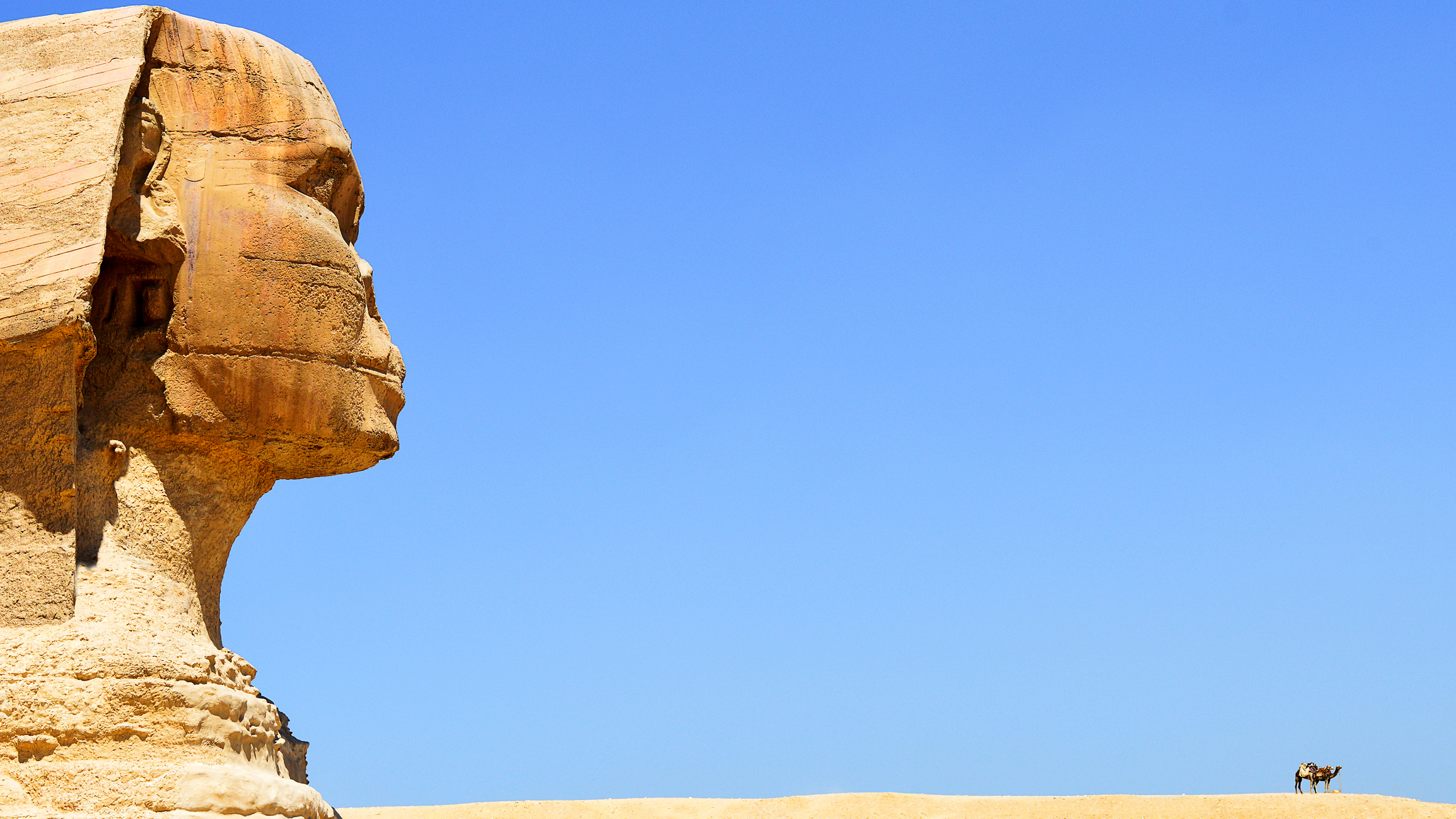 The Sphinx at the Giza Complex in Cairo, Egypt.
The Sphinx at the Giza Complex in Cairo, Egypt.